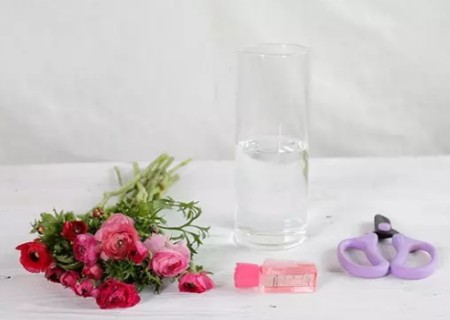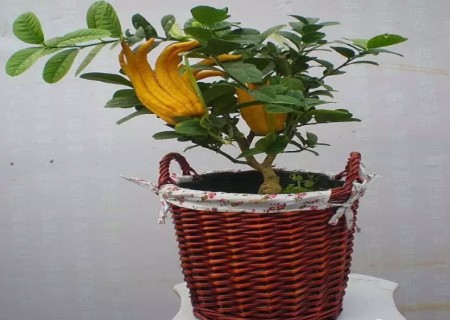How to grow potted white orchids
White orchid is an evergreen tree with large flowers, beautiful shape and delicate fragrance when it blooms. It is a relatively valuable ornamental plant, and it is also an excellent anti-pollution greening tree species in air pollution areas. Like warm, humid and sunny environment, should be well drained, loose and fertile slightly acidic soil. It has tall and straight branches, emerald green leaves, graceful posture, white and elegant flowers, quiet and sweet fragrance, continuous fragrant flowers in summer, and more family potted plants in the north.
Potted white orchids are not resistant to drought, but also afraid of water dampness, and are not resistant to cold, so they are relatively delicate flowers in the north. Therefore, the author believes that when cultivating white orchids, strengthening the management of watering, lighting, fertilization, overwintering and insect control can help the management and protection of potted white orchids. So how to grow potted white orchids?
1. Lighting
White orchids like light and are not tolerant to shade. Except during the indoor overwintering period, white orchids must receive sufficient sunlight during their growth. If they are placed in the shade for a long time, the branches and leaves are weak, the leaves are easy to fall off, and the flowers are thin and fragrant, affecting their growth. It should be noted that if it is hot and dry for a long time in summer, it can be moved to a shaded place from 11 am to 3:00 every morning, and increased foliar spray and water spray around the flowerpot, and then placed in a sunny place for maintenance.
2. Watering
The root system of white orchid is fleshy, the root will rot if watered more, and the root will wither when there is less water. therefore, we should grasp the principle of watering less rather than more, and watering thoroughly. Generally speaking, the white orchid begins to sprout in spring and is watered every 2 to 3 days to keep the basin soil loose and moist; in summer, when the white orchid enters the peak growing season, it should be watered every morning and evening, and in case of heavy rain or continuous rain, the stagnant water in the basin should be poured out in time; watering should be reduced gradually from autumn, or according to the dry and wet condition of the basin soil, if the surface of the basin soil is white, it should be watered once every 5 days or so. After entering the winter, we should pay special attention to prevent the white orchid pot soil from getting too wet or stagnant water. if ten pieces of the white orchid mouth are red and the branches are brown, it means that there is stagnant water in the roots, we should control watering, loosen the soil and strengthen ventilation, and generally irrigate once every 10 days or soil. just keep the potted soil wet.
3. Fertilization
White orchids like fertilizer, family pot fertilization generally starts in May, fertilizing every 10-15 days or so, until after flowering (about September stop. Generally speaking, fresh water should be watered once the next day after fertilization to facilitate plant absorption. The method of household fertilization is simple and easy, which can be prepared by mixing ferrous sulfate (black alum), cake fertilizer and water according to the ratio of 1 to 5 and 100, and put it in a jar until it is fully fermented and ripened, and the cake fertilizer can choose bean cake or peanut cake. After budding, white orchid should also be topdressing potassium dihydrogen phosphate for 1 and 2 times, which is beneficial to flowering. In the process of fertilization, if the leaves of white orchids are oil-green and bright, it shows that the fertilization is reasonable; if the top leaves are dark green and some leaves shrink and do not stretch, it means that excessive fertilization should be stopped immediately.
4. Pruning
Potted white orchids should choose the appropriate height, cut off the terminal buds and cut some side branches with shears. After the terminal bud is cut off, it is beneficial to how long the lateral branches are, and the longer the buds are, the more they bloom. White orchid sprouting ability is poor, generally do not prune vegetative branches, but it is necessary to cut off dead branches, disease and insect branches. The proper removal of some leaves during the bud period is conducive to the formation of buds, which can make the buds large and the florescence long. In the summer when the white orchid is growing vigorously, the 3mur5cm area with new buds is selected for pruning. After pruning, the wound is sealed with a mass of mud mixed with fungicides and auxin, and the outside is tightly wrapped with small plastic film.
5. Change the basin
According to the crown size and age of the white orchid, the pots and vats of the appropriate size should be replaced to facilitate the vigorous growth of the plant. During the operation, you should wait for the pot to dry, tilt the pot (jar) slowly (or upside down), hold the basin in one hand, grasp the plant in the other, and pour out the white orchid and move it into the new pot. The new basin (tank) should be padded with a small amount of loose soil in advance, then irrigated thoroughly, and the planting can be stable. White orchids generally turn the basin once every 2 years, each time to use a larger basin, turning the basin can be carried out after coming out of the shed in spring. The new basin should be disinfected and annealed, and the bottom of the basin should use broken tiles to make a drainage layer, spread about 3 cm of cultivated soil on the drainage layer, and then put 3 to 4 horseshoe slices as base fertilizer, and then spread a layer of cultivated soil to knock out the plant from the original pot. cut off the dead and rotten roots and put them into the new basin, fill the soil in layers and pour water immediately.
6. Overwintering
The cold tolerance of white orchid is poor, family pot overwintering management is very important, generally before Frosts Descent (mid-October) need to move into the indoor winter, and placed in the indoor sunny place. The temperature is kept at 12 ℃ during the day and no less than 6 ℃ at night, otherwise it is easy to suffer frostbite or cause fallen leaves.
In order to ensure the safe overwintering of white orchids, four points should be paid attention to during indoor maintenance: ① should pay attention to whether there are gaps in the doors and windows around the white orchids. If the doors and windows are not closed strictly, there is air leakage, which will cause fallen leaves and should be avoided. ② white orchid has poor soot resistance, so it is best not to put it in the same room with the coal stove. ③ should often spray and scrub leaves with warm water (15 ℃ ~ 20 ℃), which can not only make the leaves green and beautiful, but also increase humidity. ④ should pay attention to strictly control the watering amount of white orchids during the overwintering period and water them only when dry.
In the northern region, potted white orchids often have fallen leaves during the overwintering period, and the growers should not be nervous, but should move them to a place with higher room temperature and sufficient light, or increase the indoor temperature, as long as their roots are not damaged; when the temperature rises in spring, they can be rejuvenated. Generally in the middle of April, when the temperature is 15 ℃ ~ 18 ℃, the white orchid can be moved to the outdoor sunny place for maintenance.
7. Pest control
The main pests that harm white orchids are red spiders, shell insects and so on. Red spiders often suck the juice of white orchids, yellowing the leaves or causing plant death, and their secretions can also cause soot disease and other diseases. Therefore, attention should be paid to daily observation in family management and protection, and when abnormal color of leaves is found, the back of leaves should be carefully examined, individual leaves can be damaged, insect leaves can be removed; when more Ⅱ occurs, 1000-fold solution of dicofol can be used to control. As soon as the shell worm is found, it is immediately scraped off with a piece of bamboo.
White orchids are prone to yellowing, which is caused by alkalinity of soil and water. The leaves can be sprayed with 0.2% ferrous sulfate solution, once every 5-7 days, and fertilizer and water mixed with ferrous sulfate and cake fertilizer can be often applied to prevent it. Anthracnose of white orchid, at first ten parts of the mouth faded green, showing small yellow spots, and then gradually expanded into a circle, serious, the leaves scorched, blackened and fell off. 50% carbendazim wettable powder 800 times solution can be used to control the occurrence of carbendazim, which can be sprayed every 10 days or so.
In order to prevent diseases and insect pests, family management and protection should prune the white orchid before entering the house, remove the diseased branches, long branches and over-dense branches, and spray stone-sulfur mixture 1000 times once, which can play a preventive role.
Time: 2019-05-31 Click:
- Prev

How to raise foreign peonies in water
In this haze heavy, cold winter, in the most do not want to work on Monday winter, buy a bunch of foreign peonies, choose your favorite color, choose a good-looking vase, look up to see the bought flowers, the mood is not beautiful! In the previous tweet
- Next

Maintenance tips of potted bergamot
In recent years, potted bergamot is favored by consumers, and the sales situation is also very good. It is understood that bergamot's sales time is from August of the lunar calendar to the Spring Festival of the following year, and sales after the Spring Festival are about to enter the off-season. In the past two years, ornamental fruit plants such as kumquat, generations and tangerines have been particularly popular, among which bergamot is the most popular.
Related
- Fuxing push coffee new agricultural production and marketing class: lack of small-scale processing plants
- Jujube rice field leisure farm deep ploughing Yilan for five years to create a space for organic food and play
- Nongyu Farm-A trial of organic papaya for brave women with advanced technology
- Four points for attention in the prevention and control of diseases and insect pests of edible fungi
- How to add nutrient solution to Edible Fungi
- Is there any good way to control edible fungus mites?
- Open Inoculation Technology of Edible Fungi
- Is there any clever way to use fertilizer for edible fungus in winter?
- What agents are used to kill the pathogens of edible fungi in the mushroom shed?
- Rapid drying of Edible Fungi

